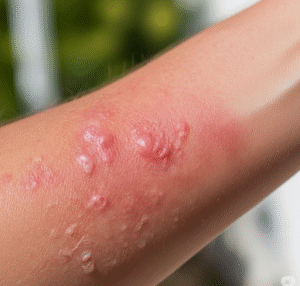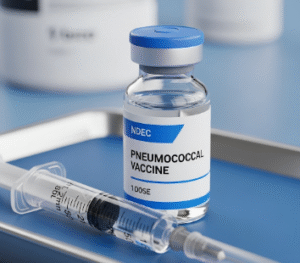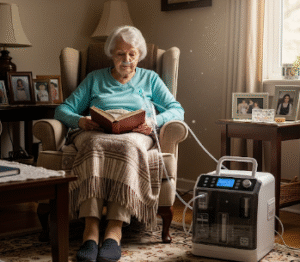Overview
Battered Person Syndrome (BPS) is a psychological condition that develops in individuals who have experienced prolonged and repeated abuse—whether physical, emotional, or psychological—from a partner, family member, or caregiver. Although it is most commonly discussed in the context of domestic violence against women, BPS can affect any gender, age group, or relationship type, including men, same-sex partners, elderly individuals, and children.
In Korea, awareness of domestic violence and psychological abuse has grown significantly in recent years, with the government and NGOs increasing efforts to identify and support victims. However, social stigma, fear of retaliation, and cultural pressures sometimes prevent victims from seeking help, which can lead to the development of Battered Person Syndrome.
What is Battered Person Syndrome?
Battered Person Syndrome is recognized as a subset of post-traumatic stress disorder (PTSD), resulting from sustained exposure to abusive behavior over time. The repeated trauma can affect how victims think, feel, and behave, often making it extremely difficult for them to leave the abusive situation.
BPS involves a cycle of abuse that typically includes:
- Tension Building Phase – Periods of criticism, minor violence, or intimidation.
- Acute Explosion Phase – Episodes of severe abuse, which may be physical, verbal, or sexual.
- Honeymoon Phase – The abuser apologizes, shows affection, or promises change, temporarily restoring hope in the victim.
Over time, the cycle repeats, and the victim may develop emotional dependency on the abuser, feelings of helplessness, and distorted beliefs about their own worth and ability to escape.
Symptoms
Symptoms of Battered Person Syndrome can be psychological, behavioral, and physical:
Psychological symptoms:
- Chronic anxiety, fear, or hypervigilance
- Low self-esteem and feelings of worthlessness
- Depression or hopelessness
- Confusion and memory problems
- Emotional numbness or detachment
Behavioral symptoms:
- Difficulty making decisions independently
- Justifying or defending the abuser’s actions
- Avoidance of friends, family, or social activities
- Difficulty trusting others, especially authority figures
- Repeated attempts to leave the abuser, followed by returning
Physical symptoms:
- Frequent unexplained injuries
- Sleep disturbances or nightmares
- Fatigue and lack of energy
- Changes in appetite or weight
- Somatic symptoms like headaches, stomach pain, or chronic muscle tension
Causes
Battered Person Syndrome develops due to prolonged, repetitive exposure to abuse in an environment where the victim feels trapped. Common causes include:
- Domestic violence from an intimate partner
- Childhood abuse leading to adult vulnerability to abusive relationships
- Caregiver abuse in elderly or disabled individuals
- Workplace abuse (less common, but possible in severe cases)
Psychologically, the condition is reinforced by learned helplessness—a state where the victim believes they cannot change their situation, even if opportunities for escape exist.
Risk Factors
Certain factors increase the likelihood of developing BPS:
- Long-term exposure to controlling or violent relationships
- History of abuse in childhood
- Financial dependence on the abuser
- Social isolation from friends and family
- Cultural or societal norms that discourage leaving a relationship
- Lack of access to support services or safe shelters
Complications
If left untreated, Battered Person Syndrome can lead to severe consequences, both mentally and physically:
Mental health complications:
- Chronic PTSD
- Major depressive disorder
- Anxiety and panic disorders
- Substance abuse as a coping mechanism
- Suicidal thoughts or attempts
Physical complications:
- Permanent injury from repeated abuse
- Weakened immune system due to chronic stress
- Stress-related illnesses such as hypertension or heart disease
Social complications:
- Inability to maintain healthy relationships
- Ongoing legal and custody battles
- Financial instability after leaving the abuser
Prevention
Preventing Battered Person Syndrome requires early recognition, intervention, and community support:
- Public education campaigns on healthy relationships and warning signs of abuse
- School-based programs to teach children about personal boundaries and respect
- Mandatory reporting laws for suspected domestic abuse cases
- Accessible shelters and hotlines for victims in immediate danger
- Legal protections, including restraining orders and relocation assistance
- Support networks to help victims rebuild their lives
In Korea, the Korea Domestic Violence Counseling Centers, emergency shelters, and the Women’s Emergency Hotline (1366) provide confidential assistance to abuse victims, regardless of gender.
Treatment Options in Korea
1. Diagnosis
- Psychological assessment to evaluate PTSD symptoms and emotional health
- Physical examination to document injuries
- Risk assessment to determine immediate safety concerns
- Interviews with the victim in a secure environment
2. Immediate Safety Measures
- Relocating the victim to a safe shelter or protected residence
- Involving law enforcement to issue restraining or protection orders
- Contacting social workers for emergency financial and housing assistance
3. Psychological Support
- Trauma-focused cognitive behavioral therapy (TF-CBT) to address anxiety, depression, and trauma responses
- Eye Movement Desensitization and Reprocessing (EMDR) for PTSD
- Group therapy with other survivors for emotional validation and peer support
- Crisis counseling for immediate emotional stabilization
4. Medical Care
- Treatment for physical injuries caused by abuse
- Management of stress-related conditions like high blood pressure
- Nutritional and sleep support to aid recovery
5. Legal and Social Support
- Legal counseling to assist with divorce, custody, or criminal cases
- Advocacy services to guide victims through the justice system
- Financial support programs for independent living
- Education and job training for economic independence
6. Long-Term Rehabilitation
- Continued psychotherapy to rebuild self-esteem and trust
- Reconnecting with family or safe social circles
- Building new coping skills to prevent re-victimization
- Regular follow-up appointments to monitor emotional progress
In Korea, survivors of Battered Person Syndrome can benefit from integrated support programs offered by both government agencies and non-profit organizations, focusing on safety, healing, and empowerment. The goal is not only to stop the cycle of abuse but also to help victims recover fully and regain control over their lives.













